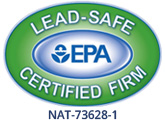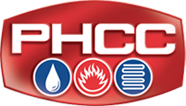Prevent Carbon Monoxide Furnace Leaks
 Based on figures from the Centers for Disease Control and Prevention, carbon monoxide (CO) poisoning results in 400 deaths in the US annually, plus 20,000 hospital visits.
Based on figures from the Centers for Disease Control and Prevention, carbon monoxide (CO) poisoning results in 400 deaths in the US annually, plus 20,000 hospital visits.
Although exposure could come from several sources, a leaking furnace or boiler in the home is a common cause. To keep your dwelling safe and free of carbon monoxide, here’s what you should know.
How Carbon Monoxide Poisoning Occurs
Carbon monoxide is an odorless and colorless gas that’s often the byproduct of burning fuel inside your home. Especially in areas with no or insufficient ventilation, the gas builds up and everyone unknowingly breathes it in.
Poisoning occurs when CO displaces the oxygen your body requires to operate. As a result, your blood can no longer transport sufficient oxygen, causing your organs and brain start to shutting down.
How Do Heaters Create Carbon Monoxide?
Heaters, including boilers and furnaces that operate using gas, oil or wood as a heat source, all come with CO risks. The combustion process generates carbon monoxide; if your unit is operating properly, it stays contained and makes its way out through the flue pipe.
However, a defect could divert the carbon monoxide gas into your home. Common causes include:
- Cracks in the combustion chamber, heat exchanger or exhaust pipe
- A leak along the seams
- Incomplete or interrupted combustion process
- Blocked flues and chimneys, preventing the gas from escaping
- Blocked vent, perhaps from furniture, a rug or closed register, causing the furnace to overheat
- A ventilation issue going back to the ductwork or blower
Although carbon monoxide can leak from any model, the issue is more common with older furnaces. Particularly, wear and tear may result in various cracks that cause the deadly gas to enter your home.
Detecting and Preventing CO Poisoning
A carbon monoxide detector – separate from a smoke detector – is the only way to identify the presence of this hazardous gas. Install units near your home’s furnace or heating system and place one on every floor. Like your smoke alarm, regular battery tests should be performed. Should the alarm go off, leave your house immediately.
Keep in mind, carbon monoxide detectors are not absolute. They can only detect extreme levels of the gas and the alarm won’t always sound for smaller levels. Over time, this could prove to be deadly or result in permanent damage.
As your home could be leaking carbon monoxide for weeks without you knowing, be sure to:
- Schedule an annual HVAC inspection, during which a technician assesses your system for cracks, leaks and other blockages and repairs them before they become a health hazard.
- Get in the habit of changing your air filters regularly. Older, dirty filters prevent air from flowing through your HVAC system.
Signs of Carbon Monoxide Poisoning
Individuals often have flu-like symptoms in the early stages of carbon monoxide poisoning, including:
- Dizziness
- Headache
- Weakness
- Vomiting
- Nausea
- Chest pain
- Confusion
These symptoms of CO exposure may eventually progress to loss of consciousness or death.
To schedule a furnace or heating system check, contact the HVAC professionals at MJ Fahy & Sons. To learn more, give us a call today.




